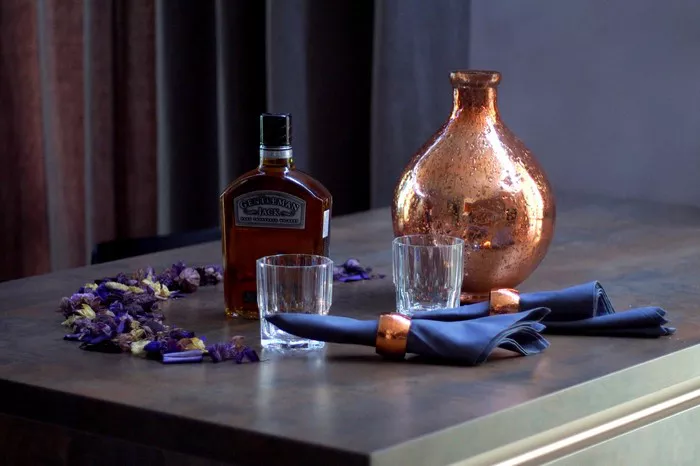Spirits, often known for their potency, are among the most alcoholic beverages available. But what exactly makes spirits so strong, and how does their alcohol content compare to other drinks? In this informative guide, we’ll delve into the world of spirits to help you understand just how alcoholic they are.
1. What Are Spirits?
Spirits, also referred to as liquor or hard liquor, are distilled alcoholic beverages. They are made through a process of distillation, where fermented liquids, such as grains, fruits, or sugarcane, are heated, vaporized, and then condensed to extract alcohol. This concentrated form of alcohol is what gives spirits their high alcoholic content.
2. Measuring Alcohol Content
Alcohol content in spirits is typically measured in terms of Alcohol by Volume (ABV), expressed as a percentage. This percentage represents the volume of pure alcohol present in the spirit in relation to the total volume of the liquid. Spirits generally range from 40% ABV (80 proof) to 60% ABV (120 proof) or even higher for some specialty spirits.
3. Comparing Spirits to Other Alcoholic Beverages
To put the alcohol content of spirits into perspective, let’s compare it to other common alcoholic beverages:
Beer: Beer typically contains an ABV of 4% to 6%, although stronger craft beers may have higher ABVs, reaching 10% or more for some specialty brews.
Wine: Wine generally falls within the range of 12% to 15% ABV, but it can vary depending on the grape variety and winemaking process. Fortified wines like port can have ABVs above 20%.
Spirits: As mentioned earlier, spirits have a much higher ABV, typically ranging from 40% to 60% or more. This concentration results from the distillation process.
4. Responsible Consumption
Due to their high alcohol content, it’s essential to consume spirits responsibly. A standard serving of spirits is typically 1.5 ounces (44 milliliters), which contains around 40% ABV. Moderation is key to enjoying spirits safely.
5. Versatility of Spirits
Spirits are valued not only for their potency but also for their versatility. They serve as the base for countless cocktails and mixed drinks, allowing for a wide range of flavors and combinations. Some popular spirits include whiskey, vodka, rum, gin, tequila, and brandy, each with its unique characteristics.
Conclusion
Spirits, with their high alcohol content, offer a unique and potent drinking experience. Understanding the alcohol content in spirits and how it compares to other beverages can help individuals make informed choices when enjoying these libations. Remember that responsible consumption is crucial to both your enjoyment and well-being when indulging in spirits.
FAQs related to the topic of “Spirits” :
1. What are spirits, and how are they different from other alcoholic beverages?
Spirits, also known as distilled spirits or liquor, are alcoholic beverages created through distillation. They differ from beer and wine in their production process and typically have a higher alcohol content.
2. What are the main types of spirits, and what are their base ingredients?
The main types of spirits include whiskey, vodka, rum, tequila, gin, brandy, and more. They are made from various base ingredients, such as grains (whiskey, vodka), sugarcane (rum), grapes (brandy), and botanicals (gin).
3. What is the distillation process for spirits, and how does it work?
Distillation involves heating a fermented liquid to create vapor and then cooling it to collect the liquid back. This process increases alcohol content and removes impurities.
4. How does the aging process affect the flavor of spirits like whiskey and brandy?
Aging in wooden barrels allows spirits to interact with the wood, extracting flavors and aromas. This process contributes to the complex and nuanced flavors of aged spirits.
5. What are some famous cocktails made with spirits as their base, and how do they differ from each other?
Cocktails like the Martini, Margarita, and Mojito use spirits as their base but incorporate various mixers and garnishes to create unique flavor profiles.
6. What are the key factors to consider when choosing a quality spirit?
Factors to consider include the base ingredients, distillation methods, aging process, brand reputation, and personal taste preferences.
7. Are there any unique regional spirits or liqueurs that are popular in specific parts of the world?
Yes, many regions have their own distinctive spirits and liqueurs. Examples include Scotch whisky from Scotland, Cachaça from Brazil, and Absinthe from Switzerland.
8. How should spirits be properly stored to maintain their quality over time?
Spirits should be stored upright in a cool, dark place, away from direct sunlight and temperature fluctuations. Airtight seals and minimal air exposure are also important.
9. Can you recommend food pairings that go well with different types of spirits?
Pairing foods with spirits can be a delightful experience. For example, whiskey often pairs well with smoked meats, while gin complements seafood dishes.
10. Are there any health considerations or effects associated with the consumption of spirits?
Responsible consumption of spirits in moderation is generally safe for most adults. However, excessive alcohol consumption can have health risks, and it’s important to be aware of the potential effects.


